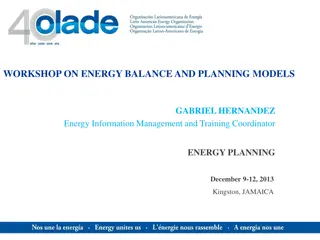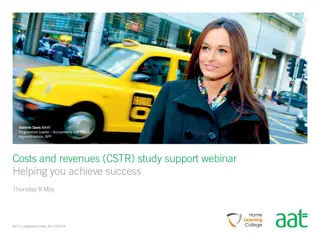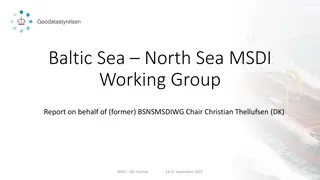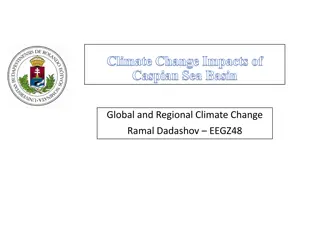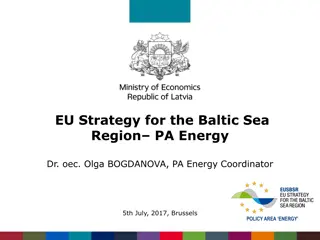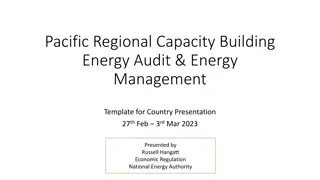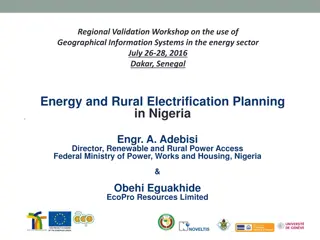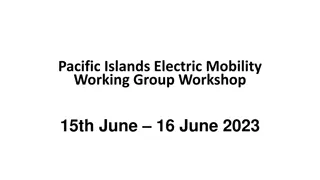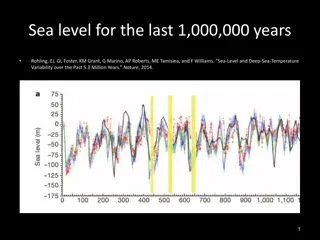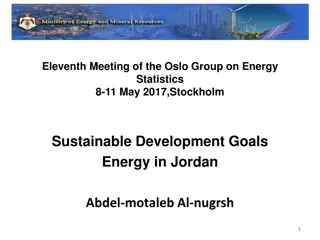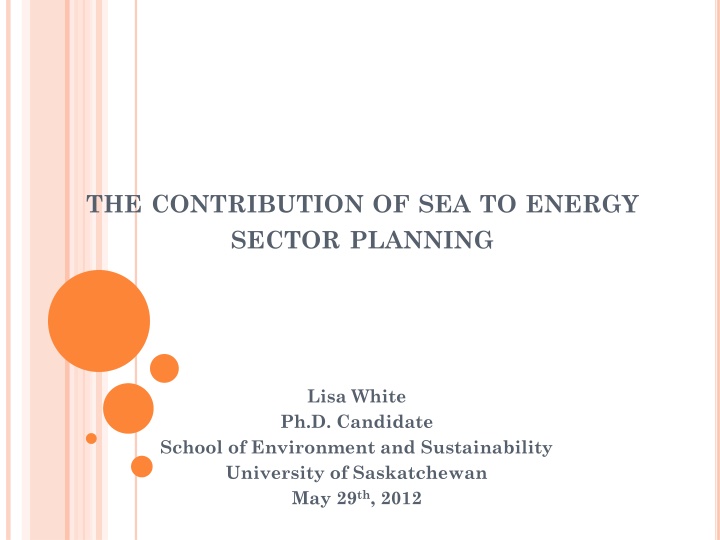
THE CONTRIBUTION OF SEA TO ENERGY SECTOR PLANNING
This study examines the role of Strategic Environmental Assessment (SEA) in energy sector planning, focusing on the electricity sector. It explores the process elements, outcomes, and implications of SEA through international case studies. Results indicate improved understanding, communication, and institutional learning, with SEA influencing decision-making in some cases. The discussion highlights the importance of considering alternatives, qualitative impact assessment methodologies, early SEA application, and the benefits of participation and tiering.
Uploaded on | 0 Views
Download Presentation

Please find below an Image/Link to download the presentation.
The content on the website is provided AS IS for your information and personal use only. It may not be sold, licensed, or shared on other websites without obtaining consent from the author. If you encounter any issues during the download, it is possible that the publisher has removed the file from their server.
You are allowed to download the files provided on this website for personal or commercial use, subject to the condition that they are used lawfully. All files are the property of their respective owners.
The content on the website is provided AS IS for your information and personal use only. It may not be sold, licensed, or shared on other websites without obtaining consent from the author.
E N D
Presentation Transcript
THE CONTRIBUTION OF SEA TO ENERGY SECTOR PLANNING Lisa White Ph.D. Candidate School of Environment and Sustainability University of Saskatchewan May 29th, 2012
RESEARCH OBJECTIVES SEA has been slow to evolve in the energy sector Can SEA contribute to energy sector planning? Decisions about energy development have significant sustainability implications Need to understand & advance SEA in energy sector planning & decision-making Role & contributions of SEA in energy sector planning are examined electricity sector in particular Determination of best practice SEA process elements & outcomes Implications?
METHODS Review of 6 international SEA case studies UK, Sweden, Portugal, Wisconsin, Ontario & Nova Scotia Level of application, spatial scales & formal/informal SEA process used 25 documents reviewed &14 interviews conducted Questions regarding purpose, timing, regulatory requirements, process steps & outcomes
RESULTS SEA PROCESS 3 cases considered alternatives 6 cases assessed impacts of the PPP: Five used social, economic and environmental criteria Qualitatitive methods dominate 6 cases had participation & engagement Ranged from simple to complex forms 6 cases proposed monitoring of some form
RESULTS SEA OUTCOMES Increased understanding & knowledge in 5 cases Improved communication & institutional learning in 6 cases SEA influenced PPP decision-making in 5 cases Tiering to lower level decision-making promoted in 6 cases Although only demonstrated in two cases
DISCUSSION Some evidence of good SEA process & PPP influence Consideration of alternatives is poor Qualitative impact assessment methodologies are dominant Early SEA application is more influential Participation has both direct & more subtle benefits Tiering is alive & well
IMPLICATIONS SEA can & does contribute to improved PPPs in the energy sector Awareness of environmental issues & PPP options Institutional learning Early application that includes alternatives Tiering Barriers to SEA realizing its full potential Lack of early application, lack of alternatives, restrictions set out by higher-level policies Better SEA guidance needed in the future
QUESTIONS? I would like to thank: Wayne Clifton, Clifton Associates Ltd., for his generous support of my academic endeavours Dr. Bram Noble, School of Environment and Sustainability, for his support and advice throughout my studies






